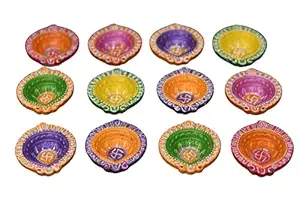કીડી
બિચારી કીડલીને કીડીના લગનીયા લેવાય
પંખી
પારેવડાને નોતર્યા..
હે કીડી
ને આપ્યા સન્માન
હાલો ને
કીડીબાઇની જાનમાં…
મોરલે
બાંધ્યો રૂડો માંડવો રે, ખજુરો પિરસે ખારેક
ભુંડે
રે ગાયાં રૂડાં ગીતડાં..
હે પોપટ
પિરસે પકવાન,
હાલો ને
કીડીબાઇની જાનમાં…
મકોડાને
મોકલ્યો માળવે રે લેવા માંડવીયો ગોળ
મંકોડો
કેડે થી પાતળો..
હે ગોળ
ઉપડ્યો ન જાય
હાલો ને
કીડીબાઇની જાનમાં…
મીનીબાઇને
મોકલ્યાં ગામમાં રે એવા નોતરવાં ગામ
હામા
મળ્યા બે કૂતરા..
હે
બિલાડીના કરડ્યા બે કાન
હાલો ને
કીડીબાઇની જાનમાં…
ઘોડે રે
બાંધ્યા પગે ઘુઘરા રે, કાકીંડે બાંધી છે કટાર
ઉંટે રે
બાંધ્યા ગળે ઢોલકા..
હે
ગધેડો ફુંકે હરણાઇ
હાલો ને
કીડીબાઇની જાનમાં….
ઉંદરમામા
હાલ્યા રે રીહામણે ને, બેઠા દરીયાને પેટ
દેડકો
બેઠો ડગમગે..
હે મને
કપડાં પેહરાવ
જાવું
છે કીડીબાઇની જાનમાં….
વાંસડે
ચડ્યો એક વાંદરો રે, જુએ જાનની વાટ
આજતો
જાનને લુટવી..
હે લેવા
સર્વેના પ્રાણ
હાલો ને
કીડીબાઇની જાનમાં….
કઇ
કીડીની કોની જાન છે રે, સંતો કરજો વિચાર
ભોજા
ભગતની વિનતી..
હે સમજો
ચતુર સુજાણ
હાલો ને
કીડીબાઇની જાનમાં….
કીડી
બિચારી કીડલી ને કીડીના લગનીયા લેવાય
પંખી
પારેવડા ને નોતર્યા..
હે કીડી
ને આપ્યા સન્માન
હાલો ને
કીડીબાઇની જાનમાં…
Overview of “Kidi Bichari Kildi Re”
Title & Meaning
'Kidi Bichari Kildi Re' translates to 'The poor ant is married.' This traditional Gujarati Garba song humorously portrays the challenges faced by a small ant in the grand scheme of life.
Artist & Recording Details
The song is a folk Garba, often performed during the Navratri festival. Specific artist details are not mentioned on the provided page.
Genre & Occasion
This Garba falls under the devotional genre, specifically Bhakti Garba, and is commonly performed during the Navratri festival in Gujarat.
Language & Dialect
The lyrics are in Gujarati, utilizing regional dialects and expressions to connect with the local audience during festive occasions.
Popularity & Versions
The Garba is popular in Gujarat during Navratri and has been performed by various artists. However, specific versions or renditions are not detailed on the provided page.
Lyrics Structure & Themes
Humorous Narrative
The song narrates the plight of an ant, highlighting its struggles and the humorous situations it encounters, reflecting the challenges of life.
Repetition & Chorus
The repetitive nature of the lyrics, especially the chorus, encourages audience participation and enhances the festive atmosphere.
Imagery & Symbolism
The lyrics incorporate vivid imagery and symbols associated with the ant's journey, depicting its challenges and resilience.
Emotional Arc
The song progresses from the ant's struggles to its eventual triumph, reflecting themes of perseverance and hope.
Community Engagement
The song's lively rhythm and engaging lyrics foster a sense of community and collective celebration during performances.
Musical & Performance Elements
Instrumentation & Rhythm
Traditional instruments like dhol, tabla, and manjira accompany the Garba, providing a rhythmic foundation that complements the dance movements.
Tempo Variation & Dynamics
The song features dynamic tempo changes, with slower verses building up to faster, energetic choruses, aligning with the dance's rhythm.
Live vs Studio Versions
Live performances often include audience interaction and improvisation, while studio versions are more polished and consistent.
Dance Cues & Movements
The Garba's choreography includes traditional steps like clapping, spinning, and footwork that correspond to the lyrics and rhythm.
Audience Participation
The repetitive chorus and rhythmic beats invite audience participation, fostering a communal and immersive experience.
Festival & Cultural Significance
Navratri Significance
Performed during the nine nights of Navratri, this Garba honors the Goddess and is a central part of the festival's cultural celebrations.
Community Identity & Bonding
The communal aspect of Garba strengthens social bonds and reinforces cultural identity among participants.
Preserving Folk Tradition
Through its performance, the Garba helps preserve and transmit traditional Gujarati folk music and dance to newer generations.
Emotional & Spiritual Uplift
The song's lively rhythm and engaging lyrics uplift the spirit, fostering a sense of connection with the divine.
How to Use & Share
Translations & Transliteration
Providing translations and transliterations makes the Garba accessible to a wider audience, including non-Gujarati speakers.
Audio / Video Embeds
Embedding audio or video versions allows users to experience the Garba directly on the website, enhancing engagement.
Printable Lyrics & PDFs
Offering downloadable lyrics in PDF format enables devotees to follow along during performances or practice sessions.
Performance Tips for Garba Nights
Providing tips on choreography, tempo changes, and audience interaction can enhance the overall performance experience.
SEO & Sharing Enhancements
Optimizing the page with relevant keywords, meta tags, and social media sharing options can improve visibility and user engagement.
'Kidi Bichari Kildi Re' translates to 'The poor ant is married.' This traditional Gujarati Garba song humorously portrays the challenges faced by a small ant in the grand scheme of life.
The song is a folk Garba, often performed during the Navratri festival. Specific artist details are not mentioned on the provided page.
This Garba falls under the devotional genre, specifically Bhakti Garba, and is commonly performed during the Navratri festival in Gujarat.
The lyrics are in Gujarati, utilizing regional dialects and expressions to connect with the local audience during festive occasions.
The Garba is popular in Gujarat during Navratri and has been performed by various artists. However, specific versions or renditions are not detailed on the provided page.
The song narrates the plight of an ant, highlighting its struggles and the humorous situations it encounters, reflecting the challenges of life.
The repetitive nature of the lyrics, especially the chorus, encourages audience participation and enhances the festive atmosphere.
The lyrics incorporate vivid imagery and symbols associated with the ant's journey, depicting its challenges and resilience.
The song progresses from the ant's struggles to its eventual triumph, reflecting themes of perseverance and hope.
The song's lively rhythm and engaging lyrics foster a sense of community and collective celebration during performances.
Traditional instruments like dhol, tabla, and manjira accompany the Garba, providing a rhythmic foundation that complements the dance movements.
The song features dynamic tempo changes, with slower verses building up to faster, energetic choruses, aligning with the dance's rhythm.
Live performances often include audience interaction and improvisation, while studio versions are more polished and consistent.
The Garba's choreography includes traditional steps like clapping, spinning, and footwork that correspond to the lyrics and rhythm.
The repetitive chorus and rhythmic beats invite audience participation, fostering a communal and immersive experience.
Performed during the nine nights of Navratri, this Garba honors the Goddess and is a central part of the festival's cultural celebrations.
The communal aspect of Garba strengthens social bonds and reinforces cultural identity among participants.
Through its performance, the Garba helps preserve and transmit traditional Gujarati folk music and dance to newer generations.
The song's lively rhythm and engaging lyrics uplift the spirit, fostering a sense of connection with the divine.
Providing translations and transliterations makes the Garba accessible to a wider audience, including non-Gujarati speakers.
Embedding audio or video versions allows users to experience the Garba directly on the website, enhancing engagement.
Offering downloadable lyrics in PDF format enables devotees to follow along during performances or practice sessions.
Providing tips on choreography, tempo changes, and audience interaction can enhance the overall performance experience.
Optimizing the page with relevant keywords, meta tags, and social media sharing options can improve visibility and user engagement.


